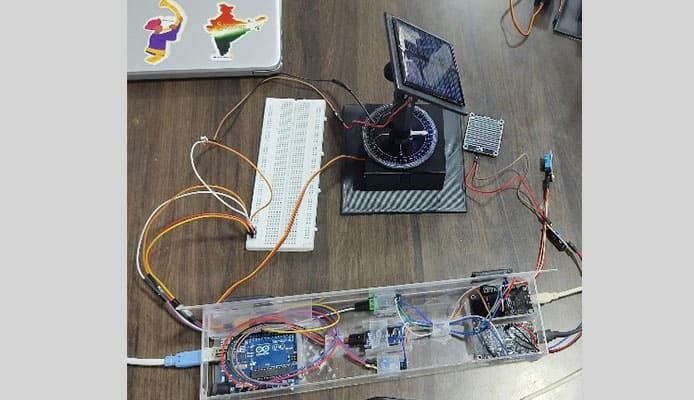The Smart India Hackathon (SIH) is a prestigious nationwide initiative aimed at engaging students
in addressing some of the most pressing challenges of everyday life. Established to promote a culture of innovation and practical problem-solving,
SIH serves as a dynamic platform for students to develop and showcase their creative solutions to real-world issues.
Since 2019, MathWorks has been a valued partner of SIH, contributing to multiple editions of the hackathon and positively
impacting the lives of thousands. MathWorks experts have provided invaluable
webinars and mentorship, guiding students through the MathWorks problem statement.
For this blog post, we’re excited to feature Team Solar Masters from Sir Padampat Singhania Univesity in Udaipur,
the winners of the Smart India Hackathon (SIH) 2024 MathWorks problem statement.
Their innovative approach and unwavering dedication led them to victory. Let’s hear their inspiring story as they share their journey, key learnings, and the strategies that fuelled their success.
With this, I will hand it over to Team Solar Masters to take us through their winning journey.
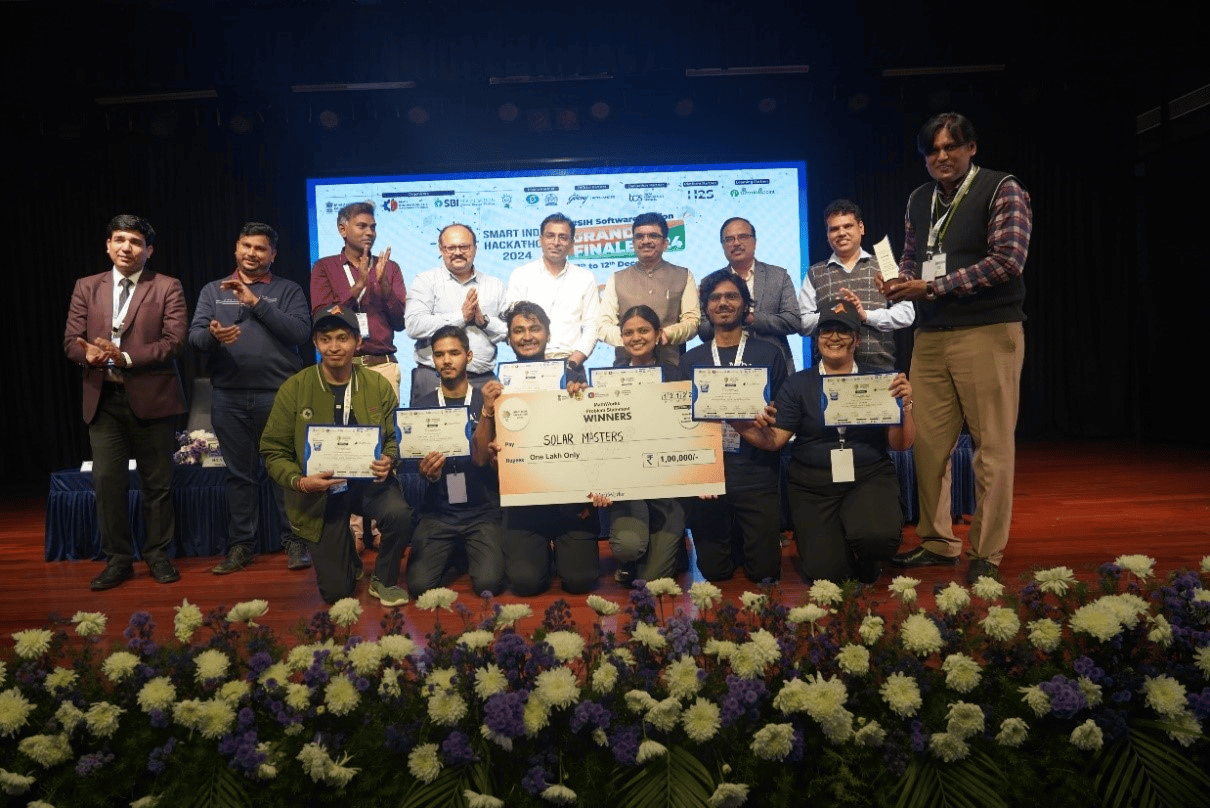
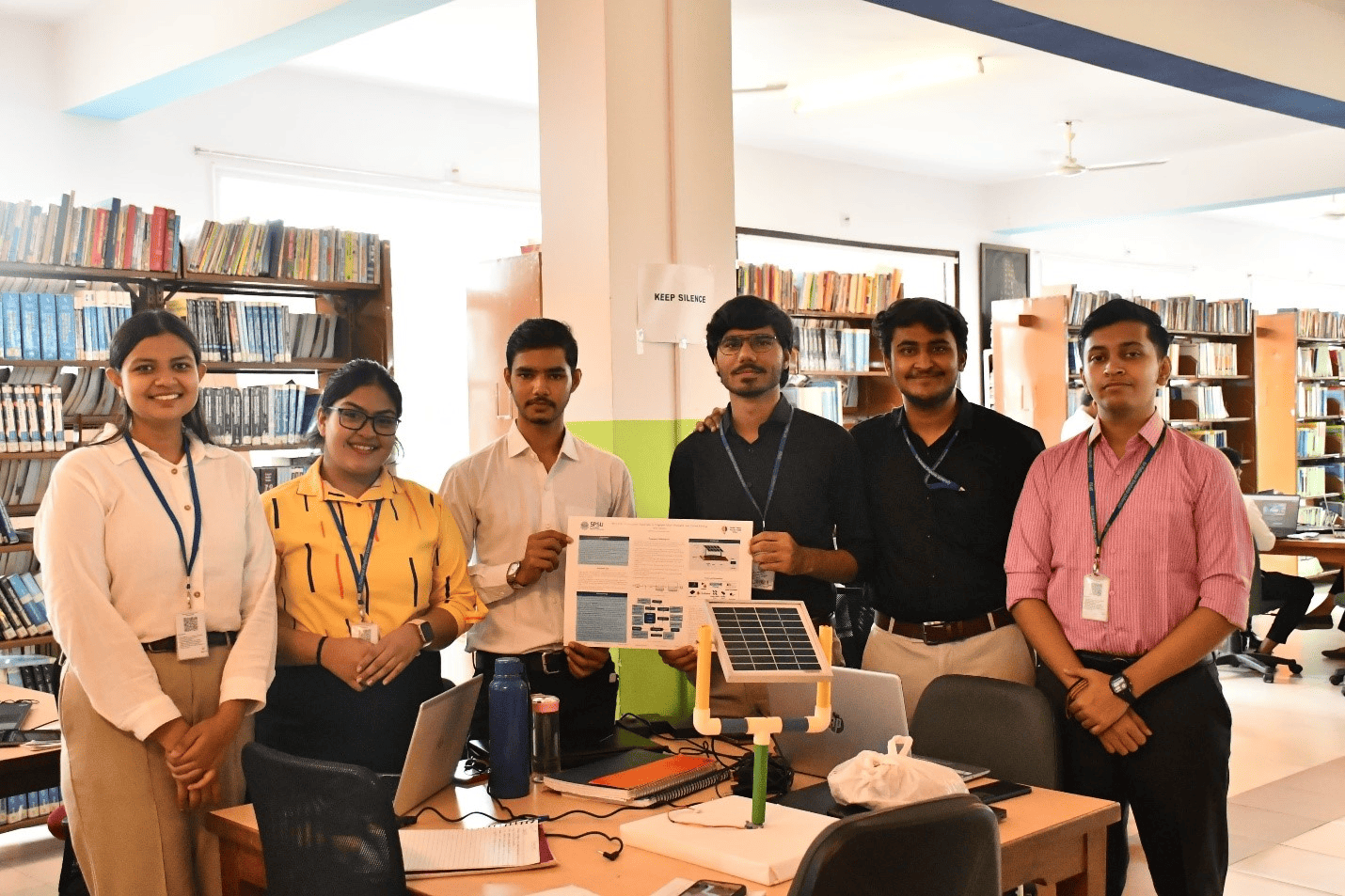 Team Solar Masters – L-R – Suhani Gupta (Researcher), Harshita Maratha (App Developer), Rudraksh Sharma (Hardware Expert), Priyansh Soni (Model Designer), Ashwani Sharma (IoT Expert), Vaibhav Rajput (Team Leader)
Team Solar Masters – L-R – Suhani Gupta (Researcher), Harshita Maratha (App Developer), Rudraksh Sharma (Hardware Expert), Priyansh Soni (Model Designer), Ashwani Sharma (IoT Expert), Vaibhav Rajput (Team Leader)
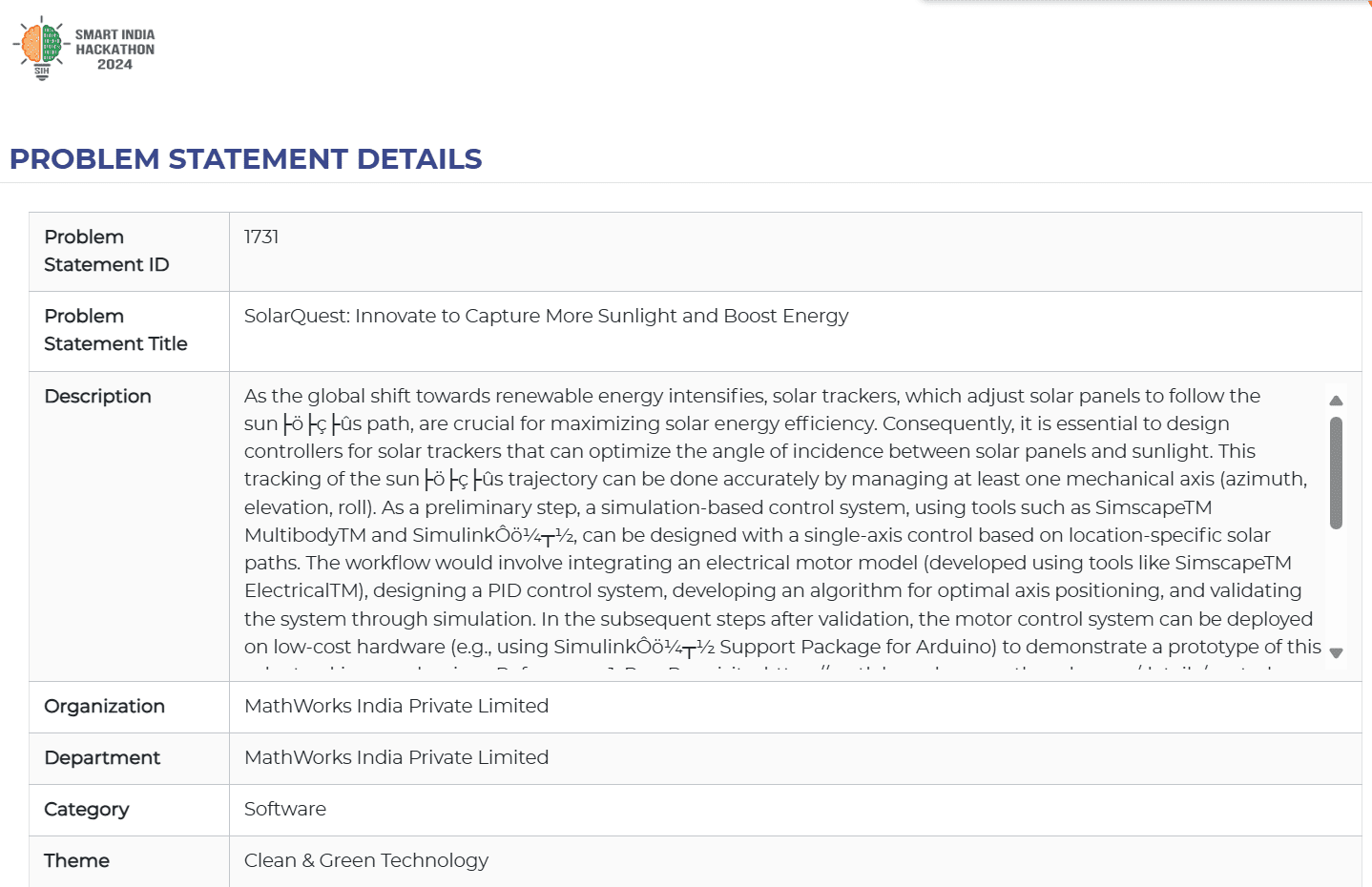
Since we had already worked on a similar system using Arduino and IoT, we found this problem statement both relevant and challenging. Additionally, it allowed us to explore new tools like MATLAB and Simulink, which were widely used in industry for simulation and hardware testing. Choosing this problem statement also meant that our previous research and efforts would not go to waste, and we could take our project to the next level.
Initially, we did not have access to a MATLAB license. However, after selecting the MathWorks problem statement, MathWorks provided free license access to all non-campus-wide institutes. This enabled us to offer the full suite of MATLAB and Simulink toolboxes to our team. It helped us to seamlessly work on the problem statement.
Plus, we got to tackle our technical doubts and optimize our solution for better efficiency. It was inspiring to see how MathWorks tools are used in industry, which really motivated us to master them!
In the webinar, we also got an opportunity to learn from SIH 2023 MathWorks statement winners fromBannari Amman Institute of Technology, Tamil Nadu. Their insights were helpful for us to plan our winning journey and plan step by step for each phase of SIH 2024.
1. Software Development & Simulation
We had to develop a software-based prototype of the solar tracking system using:
2. Hardware Implementation & Testing
After validating the algorithm through simulation, we had to:
To enhance usability, we needed to develop:
The project required us to consider several real-world constraints:
The journey of our Solar Tracking System began much before SIH, with our passion for renewable energy and our desire to build an innovative IoT-based solution. Here is how we transformed an initial concept into a SIH winning project:
1. Initial Idea & College-Level Hackathon Experience
Before SIH, our team participated in a college-level hackathon, where we developed a basic solar tracking system using IoT devices and Arduino IDE. However, due to a lack of resources and knowledge, our system remained incomplete, and we could not win the hackathon. Despite this setback, we had already conducted extensive research on solar tracking mechanisms, and we were determined to fully develop and test our system.
During the summer break, with the help of mentors and faculty, we worked on improving the project, understanding tracking algorithms, and experimenting with low-cost IoT hardware. This laid the foundation for what would later become our SIH-winning solution.
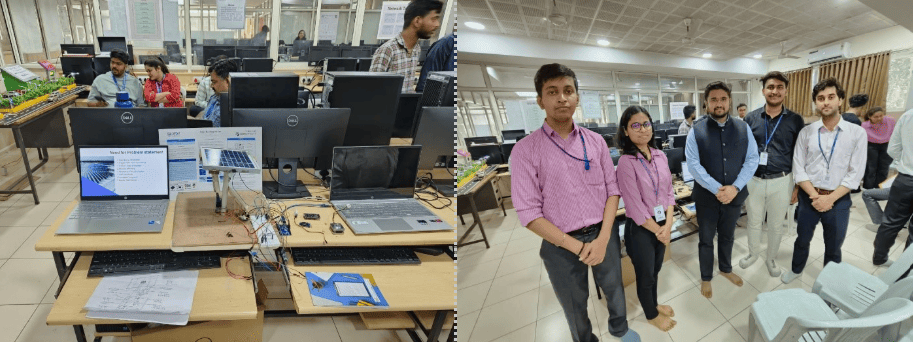 2. Finding the Right SIH Problem Statement
2. Finding the Right SIH Problem Statement
After the SIH problem statement list was released, our team searched for a challenge that aligned with our domain expertise and previous work. We found a problem statement provided by MathWorks India Pvt. Ltd., which required the development of a solar tracking system using MATLAB, Simulink, and Simscape
This was an exciting yet challenging opportunity, as we had never used MathWorks tools before, but the project scope was perfectly aligned with our past efforts. We discussed the feasibility with our mentor, and after analysing the problem requirements and constraints, we officially chose this problem statement.
3. Learning & Skill Development
Since none of us had prior experience with MATLAB, Simulink, or Simscape,we took the initiative to enroll in MathWorks self-paced courses to learn these tools. Over the next two weeks, we:
With a better grasp of software-based testing and simulation, we shared my learnings with each other, and we started refining our tracking algorithm.
4. Developing the First Software Prototype
Once we understood MATLAB, Simulink, and Simscape, we began building our solar tracking algorithm, which included:
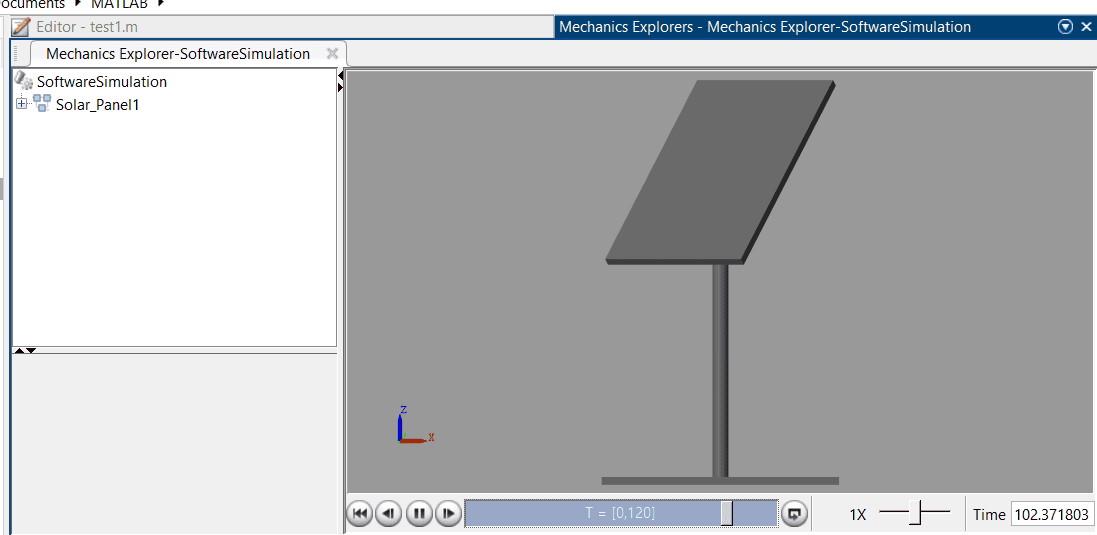
5. Internal Hackathon & Selection for SIH
Before submitting our project to SIH, our college organized an internal hackathon to select the best teams. By this time, we had:
During the SIH submission phase, we prepared:
6. Preparation for SIH Grand Finale
After selection, MathWorks conducted a webinar for all finalist teams, where they:
7. Final Testing & Optimization
As the SIH Grand Finale approached, we performed extensive testing on our system:
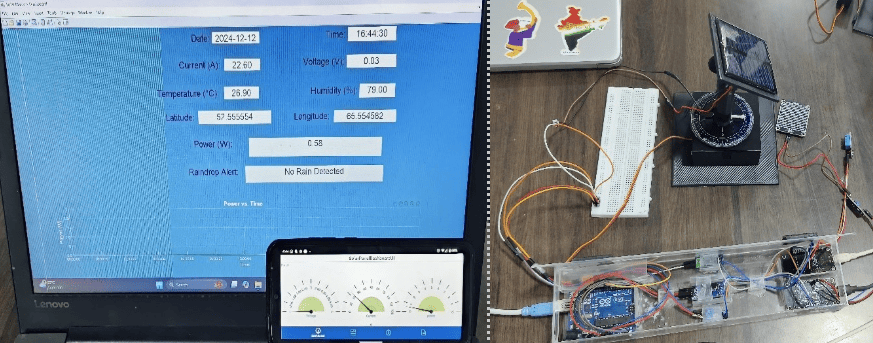
8. SIH Grand Finale & Winning the Competition
We travelled to New Horizon College of Engineering, Bangalore, for the SIH Grand Finale. During the 36-hour hackathon:
9. Post-SIH Success & Future Plans
We participated in the AICTE IDE Bootcamp, where we learned to turn our project into a startup by developing a business model, revenue strategy, and scalability plan.Our project was presented to industry experts, and we emerged as top performers among 50 teams.
Now, we plan to develop a real-time prototype with an integrated panel cleaning system, enhance tracking accuracy while reducing power consumption, and explore funding opportunities to scale the project into a startup.
We are also grateful for the opportunity to feature in the SIH winning team video testimonial created by MathWorks. This video will be a part of promotions of future editions of MathWorks participation in SIH, and a great personal branding for our achievement. Following the hackathon, we also had the privilege of attending 1-1 mentorship session with MathWorks experts, gaining valuable insights and guidance for further product development.
Our next steps include seeking grants, funding, and incubation support to develop a cost-effective, industry-ready solution. By collaborating with solar energy companies and leveraging government initiatives, we aim to deploy our system on a larger scale, contributing to the widespread adoption of efficient and sustainable solar energy solutions.
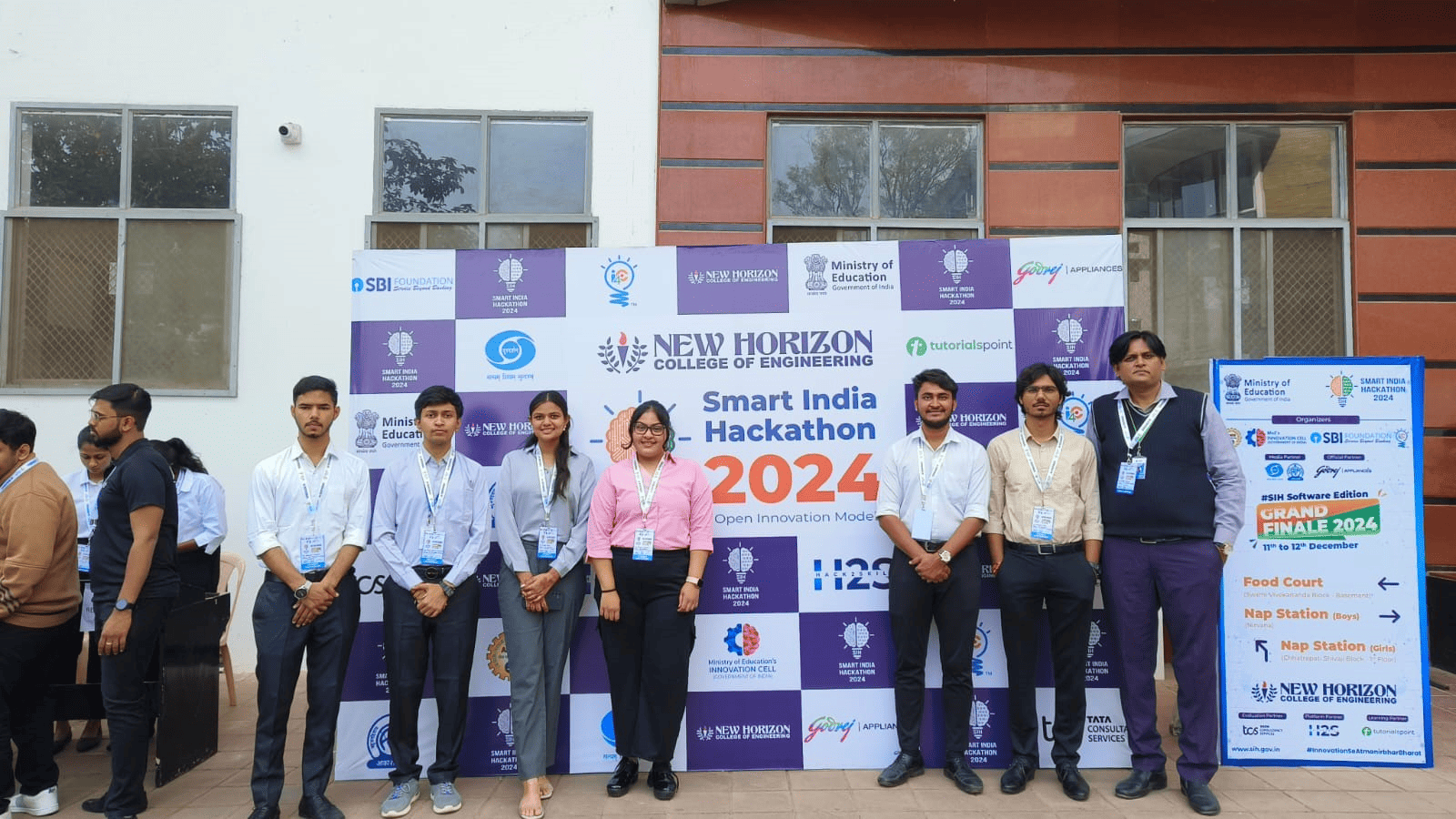

 Team Solar Masters – L-R – Suhani Gupta (Researcher), Harshita Maratha (App Developer), Rudraksh Sharma (Hardware Expert), Priyansh Soni (Model Designer), Ashwani Sharma (IoT Expert), Vaibhav Rajput (Team Leader)
Team Solar Masters – L-R – Suhani Gupta (Researcher), Harshita Maratha (App Developer), Rudraksh Sharma (Hardware Expert), Priyansh Soni (Model Designer), Ashwani Sharma (IoT Expert), Vaibhav Rajput (Team Leader)
What made you join the Smart India Hackathon?
We joined the Smart India Hackathon (SIH) because it provided a national-level platform to solve real-world problems and gain exposure to industry-relevant challenges. Our team had already worked on a solar tracking system for a college-level hackathon, but due to lack of knowledge and resources, we could not fully develop it.SIH gave us an opportunity to refine our idea, improve our prototype, and develop a complete solution while competing with some of the best minds in the country. Moreover, SIH was backed by government and industry leaders, making it an ideal opportunity for innovation, learning, and networking.What made you select MathWorks problem statement?
After reviewing the SIH problem statement list, we looked for a challenge that matched our domain knowledge and expertise. We came across the MathWorks problem statement SIH1731 (image below), which required developing a solar tracking system using MATLAB, Simulink, and Simscape.
Since we had already worked on a similar system using Arduino and IoT, we found this problem statement both relevant and challenging. Additionally, it allowed us to explore new tools like MATLAB and Simulink, which were widely used in industry for simulation and hardware testing. Choosing this problem statement also meant that our previous research and efforts would not go to waste, and we could take our project to the next level.
Initially, we did not have access to a MATLAB license. However, after selecting the MathWorks problem statement, MathWorks provided free license access to all non-campus-wide institutes. This enabled us to offer the full suite of MATLAB and Simulink toolboxes to our team. It helped us to seamlessly work on the problem statement.
How did the MathWorks Webinar help you?
The MathWorks Webinar was super helpful for us! It helped us understand the MathWorks problem statement and what was expected for the grand finale. The team showed us how to use MATLAB, Simulink, and Simscape to design and simulate our tracking system. They also gave tips on presenting our final project, covering software development, hardware integration, and real-world testing.Plus, we got to tackle our technical doubts and optimize our solution for better efficiency. It was inspiring to see how MathWorks tools are used in industry, which really motivated us to master them!
In the webinar, we also got an opportunity to learn from SIH 2023 MathWorks statement winners fromBannari Amman Institute of Technology, Tamil Nadu. Their insights were helpful for us to plan our winning journey and plan step by step for each phase of SIH 2024.
Breaking Down the Problem
The MathWorks problem statement required us to develop, test, and implement a single-axis solar tracking system using MATLAB, Simulink, and Simscape. The objective was to maximize solar energy efficiency by dynamically adjusting the panel’s position based on the sun’s movement. The problem statement had four key aspects:1. Software Development & Simulation
We had to develop a software-based prototype of the solar tracking system using:
- MATLAB and Simulink for designing and testing the control algorithm.
- Simscape Electrical and Simscape Multibody for simulating the movement and electrical characteristics of the system.
- The software simulation needed to replicate real-world conditions and ensure the system’s accuracy in tracking the sun.
2. Hardware Implementation & Testing
After validating the algorithm through simulation, we had to:
- Build a physical prototype using low-cost IoT devices and Arduino hardware.
- Implement the Simulink Support Package for Arduino Hardware to control the system.
- Test the system in real-world conditions to ensure that it accurately follows the sun’s movement based on date, time, and location.
To enhance usability, we needed to develop:
- A MATLAB App for real-time monitoring of energy efficiency and system performance built using Matlab App Designer.
- An Android application using the Simulink support package for android devices for mobile monitoring.
- A cloud-based data storage system (ThingSpeak) to log and analyze sensor data.
The project required us to consider several real-world constraints:
- Environmental factors like weather conditions, dust accumulation, and hardware durability.
- Optimizing tracking efficiency while keeping power consumption minimal.
- Ensuring cost-effectiveness so the system could be implemented in large-scale solar farms.
Journey from Idea to Building the Solution
The journey of our Solar Tracking System began much before SIH, with our passion for renewable energy and our desire to build an innovative IoT-based solution. Here is how we transformed an initial concept into a SIH winning project:
1. Initial Idea & College-Level Hackathon Experience
Before SIH, our team participated in a college-level hackathon, where we developed a basic solar tracking system using IoT devices and Arduino IDE. However, due to a lack of resources and knowledge, our system remained incomplete, and we could not win the hackathon. Despite this setback, we had already conducted extensive research on solar tracking mechanisms, and we were determined to fully develop and test our system.
During the summer break, with the help of mentors and faculty, we worked on improving the project, understanding tracking algorithms, and experimenting with low-cost IoT hardware. This laid the foundation for what would later become our SIH-winning solution.
 2. Finding the Right SIH Problem Statement
2. Finding the Right SIH Problem StatementAfter the SIH problem statement list was released, our team searched for a challenge that aligned with our domain expertise and previous work. We found a problem statement provided by MathWorks India Pvt. Ltd., which required the development of a solar tracking system using MATLAB, Simulink, and Simscape
This was an exciting yet challenging opportunity, as we had never used MathWorks tools before, but the project scope was perfectly aligned with our past efforts. We discussed the feasibility with our mentor, and after analysing the problem requirements and constraints, we officially chose this problem statement.
3. Learning & Skill Development
Since none of us had prior experience with MATLAB, Simulink, or Simscape,we took the initiative to enroll in MathWorks self-paced courses to learn these tools. Over the next two weeks, we:
- Understood how Simulink works and how to simulate electrical and mechanical systems.
- Developed a basic tracking algorithm in Simulink Online.
- Discovered that we could request MathWorks for a licensed version of Simulink Offline, which I successfully obtained via email.
With a better grasp of software-based testing and simulation, we shared my learnings with each other, and we started refining our tracking algorithm.
4. Developing the First Software Prototype
Once we understood MATLAB, Simulink, and Simscape, we began building our solar tracking algorithm, which included:
- Azimuth-based sun tracking using date, time, and location data.
- Simulating the panel movement using Simscape Mechanical.
- Testing energy efficiency using Simscape Electrical.

5. Internal Hackathon & Selection for SIH
Before submitting our project to SIH, our college organized an internal hackathon to select the best teams. By this time, we had:
- A fully working software prototype built on MATLAB & Simulink.
- A hardware prototype developed using Arduino and IoT sensors.
- A structured presentation showcasing our solution.
During the SIH submission phase, we prepared:
- A detailed project PPT explaining our methodology.
- A YouTube video demonstration showcasing our working prototype
- All technical documents as per SIH requirements.
6. Preparation for SIH Grand Finale
After selection, MathWorks conducted a webinar for all finalist teams, where they:
- Explained what to present during the grand finale.
- Guided us on how to optimize our MATLAB & Simulink models.
- Shared best practices for hardware integration and real-world testing.
7. Final Testing & Optimization
As the SIH Grand Finale approached, we performed extensive testing on our system:
- Verified real-time sun tracking based on date, time, and location.
- Ensured 20% higher efficiency compared to fixed solar panels.
- Integrated ThingSpeak cloud data for performance monitoring.
- Developed MATLAB & Android apps for system monitoring.

8. SIH Grand Finale & Winning the Competition
We travelled to New Horizon College of Engineering, Bangalore, for the SIH Grand Finale. During the 36-hour hackathon:
- We presented our software simulation results using MATLAB & Simulink.
- We explained how our MATLAB & Android apps provided system monitoring.
- We highlighted how our solution improves solar efficiency while being cost-effective.
9. Post-SIH Success & Future Plans
We participated in the AICTE IDE Bootcamp, where we learned to turn our project into a startup by developing a business model, revenue strategy, and scalability plan.Our project was presented to industry experts, and we emerged as top performers among 50 teams.
Now, we plan to develop a real-time prototype with an integrated panel cleaning system, enhance tracking accuracy while reducing power consumption, and explore funding opportunities to scale the project into a startup.
We are also grateful for the opportunity to feature in the SIH winning team video testimonial created by MathWorks. This video will be a part of promotions of future editions of MathWorks participation in SIH, and a great personal branding for our achievement. Following the hackathon, we also had the privilege of attending 1-1 mentorship session with MathWorks experts, gaining valuable insights and guidance for further product development.
Future Project Implementation Plans
Moving forward, we aim to enhance our solar tracking system by developing a real-time prototype equipped with an automated panel cleaning mechanism to improve efficiency and maintainoptimal energy output. To make our solution commercially viable, we plan to focus on scalability by testing it on larger solar panel arrays and optimizing the tracking algorithm for different geographical locations.Our next steps include seeking grants, funding, and incubation support to develop a cost-effective, industry-ready solution. By collaborating with solar energy companies and leveraging government initiatives, we aim to deploy our system on a larger scale, contributing to the widespread adoption of efficient and sustainable solar energy solutions.




